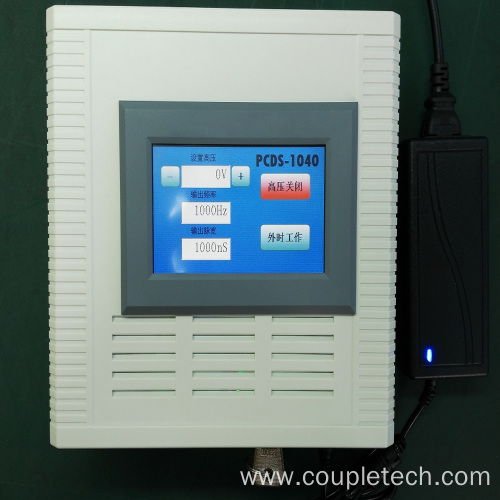Understanding the Pockels Cell Driver: A Key Component in Advanced Optics
2025-03-26
In the world of optical technologies, the Pockels cell driver plays a crucial role in controlling light with precision. Whether in scientific research, telecommunications, or laser systems, Pockels cells are used for manipulating the properties of light, and the Pockels cell driver is the device responsible for powering these systems. But what exactly is a Pockels cell driver, and how does it function? Let’s explore this important component and its applications in the field of optics.
What is a Pockels Cell?
Before diving into the Pockels cell driver, it’s important to understand what a Pockels cell is and its role in optical systems. A Pockels cell is a type of electro-optic device that uses the Pockels effect to change the properties of light passing through it. The Pockels effect is a phenomenon where the refractive index of certain crystals changes in response to an applied electric field, allowing the cell to control the polarization of light.
Pockels cells are widely used in applications such as modulating laser beams, switching light paths, and controlling the intensity and polarization of light in various systems. Commonly made from materials like potassium titanyl phosphate (KTP) or lithium niobate (LN), these crystals are capable of manipulating light with high precision, making them indispensable in advanced optical setups.
The Role of the Pockels Cell Driver
The Pockels cell driver is an electronic device that provides the necessary voltage to the Pockels cell, enabling it to modulate the light passing through. The driver applies a high-voltage signal to the Pockels cell, causing the crystal’s refractive index to change, which in turn affects the light. The voltage signal must be accurate, stable, and sometimes rapid, depending on the application.
The driver is designed to generate the precise electrical pulses needed to control the electro-optic properties of the Pockels cell. These electrical pulses are typically fast, with some systems requiring nanosecond or picosecond response times, making the driver a critical component in high-speed optical operations.
Key Features of a Pockels Cell Driver
1. High Voltage Output
One of the key features of a Pockels cell driver is its ability to produce a high voltage output. Since Pockels cells often require tens or hundreds of volts to induce the desired changes in light, the driver must be capable of providing a stable high-voltage signal. This voltage must be controlled precisely to ensure the cell operates optimally.
2. Fast Response Times
For applications like laser pulse modulation or optical switching, response times are critical. A Pockels cell driver must be capable of delivering rapid voltage changes to the cell, sometimes in the range of nanoseconds or even picoseconds. This speed is necessary for applications like ultrafast lasers or high-frequency optical communications.
3. Stability and Precision
The accuracy and stability of the voltage signal are crucial in ensuring that the Pockels cell performs as intended. Fluctuations in voltage or timing can lead to distortion in the modulated light, affecting the overall performance of the optical system. Therefore, a good Pockels cell driver provides highly stable and precise control of the voltage.
4. Customization for Specific Applications
Different applications require different characteristics from the Pockels cell and, consequently, from the driver. For example, some systems require continuous operation, while others may need pulsed or burst-driven signals. Many Pockels cell drivers come with adjustable settings, allowing them to be fine-tuned to meet the specific requirements of the optical system.
5. Integration with Other Optics Components
Pockels cell drivers are often part of a larger optical system, working in conjunction with other components like laser sources, modulators, and detectors. A well-designed driver will integrate smoothly with these systems, ensuring synchronization and efficient operation.
Applications of the Pockels Cell and Driver
The Pockels cell driver is essential in many fields where precise light control is needed. Below are some of the key applications of Pockels cells and their drivers:
1. Laser Pulse Modulation
In laser systems, Pockels cells are frequently used to modulate the intensity, frequency, or polarization of laser pulses. The Pockels cell driver controls the pulse shaping and timing, allowing for applications such as pulsed laser systems in materials processing, spectroscopy, and medical treatments.
2. Optical Switching
Pockels cells can be used in optical switching devices, where the path of light is directed to different channels based on the applied electric field. This is particularly useful in telecommunications and fiber-optic networks, where optical switches help route data efficiently.
3. Telecommunications
In optical communication systems, Pockels cells can be used to modulate light signals, enabling high-speed data transmission. The driver’s precision and speed ensure that the modulation is accurate, which is vital for maintaining high data rates and signal integrity.
4. Quantum Computing and Research
Pockels cells and drivers are increasingly used in quantum optics and quantum computing research. Quantum systems often require precise manipulation of light at very high speeds, and the Pockels cell driver plays a key role in enabling these advanced technologies.
5. Scientific Instruments
Many scientific instruments, such as spectrometers, microscopes, and interferometers, use Pockels cells for light modulation. In these instruments, the Pockels cell driver is integral to achieving the precise control needed for accurate measurements and experiments.
Choosing the Right Pockels Cell Driver
When selecting a Pockels cell driver, several factors need to be considered to ensure it is suited to the intended application. These include the required voltage range, the speed of the voltage response, the compatibility with the specific Pockels cell being used, and the power consumption of the driver. Manufacturers typically provide technical specifications and recommendations for pairing drivers with particular Pockels cells to optimize performance.
Additionally, the ease of integration into larger optical systems is an important factor. For research or industrial applications that require complex setups, it’s essential to choose a driver that can be easily synchronized with other equipment and controlled by external signals if necessary.
Conclusion
The Pockels cell driver is a key component in the world of optics and photonics, enabling precise control of light through Pockels cells. With applications ranging from laser systems and optical communications to quantum research, the driver’s ability to provide stable, fast, and accurate voltage control is essential for a variety of high-tech industries. Whether you are involved in scientific research, telecommunications, or laser development, understanding the role and functionality of the Pockels cell driver is vital for optimizing your optical systems. As the demand for faster, more efficient optical technologies grows, the importance of the Pockels cell driver will continue to expand, offering endless possibilities for innovation in light manipulation.



